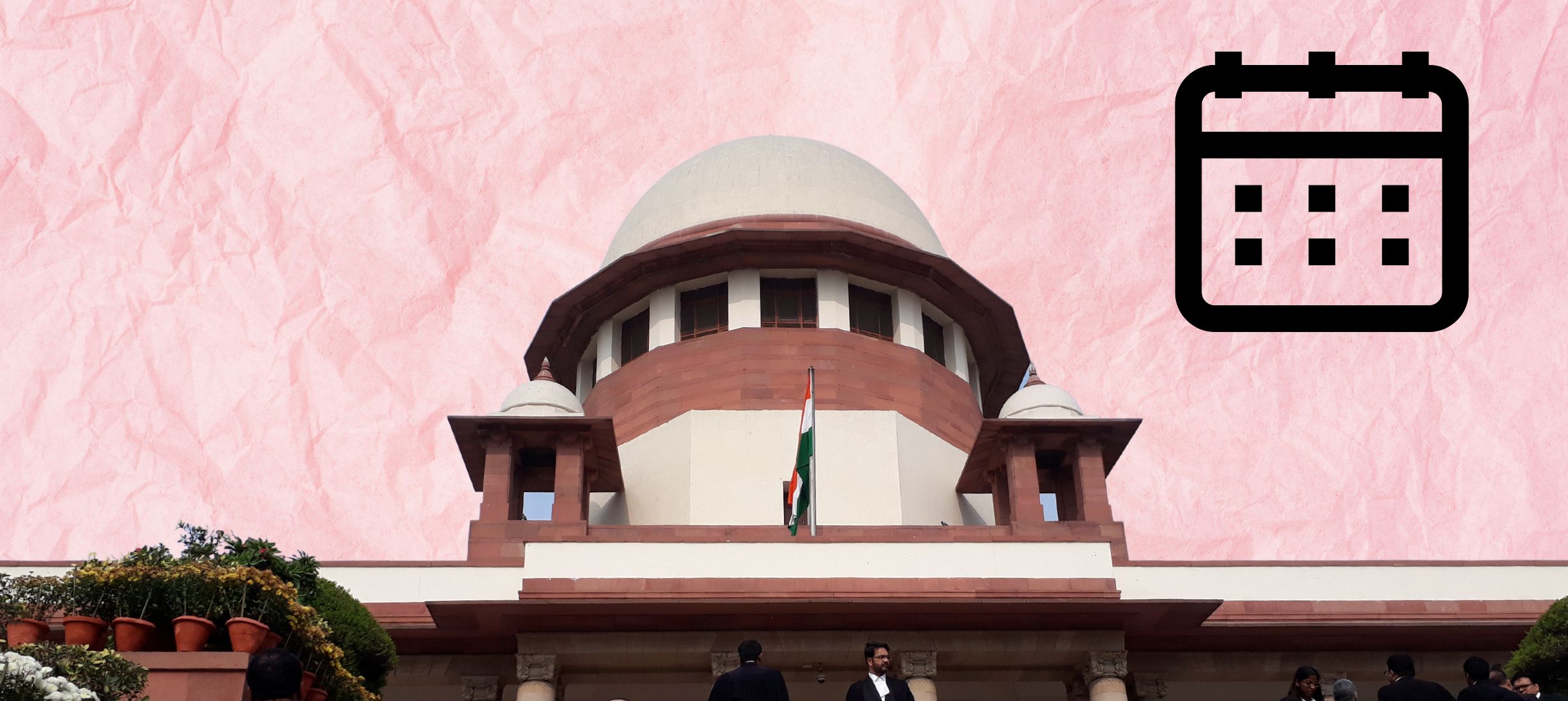Court Data
Does the Supreme Court of India Work More Days than Other Top Courts Across the World?
The top court of India hears cases for 190 days a year, a significantly higher workload compared to its counterparts worldwide.

The Supreme Court of India goes on holiday for 89 days a year*. This includes public holidays, the Holi break, a six-week summer break, a week in Dussehra and Diwali, and two weeks in Christmas. It is often argued that long vacations contribute to the rise in the pendency of cases. Recently, Chief Justice D.Y. Chandrachud justified that vacations are required for the top Court to function efficiently, and he compared the highest court with its foreign counterparts to buttress his point.
In 2023, the Supreme Court made significant progress in reducing the backlog of cases, which makes a strong argument against discrediting longer vacations. Additionally, unlike some other countries, the Indian top Court operates throughout the year. In this piece, we will compare the activity of the Supreme Court of India to other top courts around the world.
Number of Sitting Days
Figure 1 provides an overview of the sitting days in the top courts of eight countries. The x-axis represents the countries, while the y-axis displays the number of sitting days. Sitting days refer to the days when the courts hear oral arguments.
It is important to note that different top courts have their unique procedures for functioning. The Supreme Courts of Bangladesh, India, and Singapore, for instance, conduct hearings throughout the year, with scheduled mid-year and year-end vacations. On the other hand, the Supreme Court of the United States (SCOTUS), the High Court of Australia, the Constitutional Court of South Africa, and the Supreme Court of the United Kingdom (UK) follow a term-based system. They only hear cases on specific days or weeks of the year.
For example, the High Court of Australia allocates two weeks per month for hearing arguments. The SCOTUS typically hears arguments for approximately five to six days each month. Similarly, the Courts of South Africa and the UK divide their legal year into four terms.
Further, the workload of each top Court varies. The Supreme Court of India handles a significantly higher number of cases including appeals and original cases—with 28,651 cases instituted in 2022. In contrast, the SCOTUS deals with a comparatively lower number of cases, ranging from 5,000 to 7,000 cases instituted annually. This may also explain the large difference in working days between the two courts. Similarly, the courts of Australia, South Africa, the UK, Bangladesh, and Israel have a lesser caseload than India.
According to Figure 1, the Indian Supreme Court has a higher number of sitting days, with 190 days in a year. In comparison, other top courts have fewer sitting days—the USA (68 days)**, Australia (97 days), South Africa (128 days), the UK (149 days), Israel (159 days), and Bangladesh (183 days). The Supreme Court of Singapore surpasses all other top courts with the highest number of sitting days—208 days.
The Supreme Court of India also constitutes vacation benches during the summer break. Vacation benches usually hear urgent cases along with regular matters. The vacation benches were not taken into account to calculate the sitting days of the Supreme Court.
Number of Non-Working Days
Note: Click on the tabs ‘Non-Sitting Days’ and ‘Official Non-Sitting Days’ in the Chart to view both data points.
Figure 2 presents data on the non-working days in the top courts. Non-working days encompass both non-sitting days and official non-sitting days. Official non-sitting days include public holidays and court vacations as per the court calendars. Non-sitting days include the days when the Courts are not functioning at all, they include weekends or gaps between terms.
According to the figure, the Supreme Court of India has a total of 175 non-working days, with 89 of them being official non-sitting days. The Indian Supreme Court has relatively fewer breaks compared to other countries, except for Singapore. The top court of Singapore has the least number of non-working days—157 days.
The Supreme Court of Bangladesh, which shares functional similarities with the Supreme Court of India, remains inactive for 182 days, including 86 official holidays.
In contrast, the Supreme Court of the United States has the highest number of non-working days, with a total of 297 days. It is worth noting that the US Supreme Court has only 11 official non-sitting days in its calendar. Similarly, the High Court of Australia is inactive for 268 days, with just 11 official holidays.
The Supreme Courts of the UK and South Africa are inactive for 216 and 237 days respectively. Interestingly, there are only two official non-working days in the UK calendar***.
Lastly, the Supreme Court of Israel hears arguments for 159 days, resulting in 206 days of inactivity.
*as per the legal calendar year of 2023
**The SCOTUS has Argument days where they hear oral submissions, Non-Argument Days where they read out verdicts and Conference Days where the judges discuss cases in private. The total number of working days includes all of these activities.
***Usually there is only one official holiday in the United Kingdom, this year was an exception due to the Coronation of King Charles III




